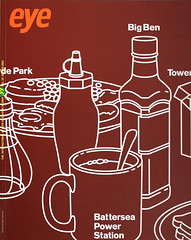Spring 2001
Reduced Eden: gardens and flowers
Scopophilic horticulture is back with a vengeance. Photographers and designers strive to represent raw nature in the form of outdoor chill-out spaces: sublimated eroticism for the consuming classes, or a canonic celebration of the persistence and transience of beauty?
The vogue for transforming back yards into horticultural fusion menus is not actually about a love of gardening. It is more a renewed enthusiasm, a megalomaniac urge, even, to create a new, reduced Eden. Gardening has changed from a world of seed packets and cans of Slug Doom to a world of flat-packed Chatsworths. Present-day property-owners have the means to pursue domestic bliss but lack the time to do it. Fortunately, results can be achieved quickly through buying a fitted garden, obviating the need for arcane or encyclopedic knowledge.
The big idea is that of making outdoor rooms, a concept dominant in the Islamic and Christian world until the late-seventeenth century. Critiques of this trend tend to comes from those who are interested in the idea that gardening is about nature or growing things. Actual gardening is hard work, which gives suburban gardening its aura of morality, whereas gardens are about the spirit, pleasure and relaxation, and therefore immoral. It is not enough to be lazy and well off: to create these new gardens requires well researched design, and there is a plethora of books, TV programmes and products to meet the need. This increasing democratisation and demystification of the design process is a bugbear for professional designers who thrive on its mystery: the ever-faster cycle of innovation makes them have to work faster.
The new garden reflects the Modernist interest in blurring distinctions between inside and out, and drawing ideas from non-European cultures. Perhaps the efflorescence of consumerism disguises a more positive attitude toward improving the places in which we live, and focusing on the values of design rather than those of class and heritage. Yet the urge to garden in its current form was historically most evident in the purlieus of the autocratic.
Gardening has the ingredients of the kitchen and the spatiality of interior design, so opinion-formers have looked to previous strategies of both these areas of creativity to develop the new gardener. When interior design was popularised in the 1960s, Mario Praz [1] noted that the house, like fashion, was ‘an expression, an expansion of the ego’. We now realise that this applies to every aspect of the world. Equally, every aspect of our chosen life has become a tyranny of judgment by others. This is why when any new market is developed there is always a lexicon of earlier, more exclusive practice to borrow from. As Mary Gilliat points out in English Style: ‘Outside influence is important to the English who [are] better at absorption and neat regurgitation than at straightforward creativity.’ [2]
This last point is demonstrated in Phaidon’s The Garden Book (ed. Tim Richardson, Phaidon, 2000), which shows an exhaustive selection of gardens without obvious interpretation – there is an admirable absence of information or opinion in its simple alphabetical listing. Surveying one garden choice after another, the reader experiences the same sense of possibility that eighteenth-century aristocrats had flicking through the landscape books of Humphrey Repton or Batty Langley. The book triumphs by bringing home the truth that these gardens are real art, more significant and poetic than painting, sculpture or architecture – not least because they are artificial yet living and natural environments, ever-present yet transient.
1. From the Illustrated History of Interior Decoration, quoted in English Style.
2. From Mary Gilliat’s introduction to English Style (Bodley Head, 1967).
David Heathcote, design historian, York and London
First published in Eye no. 39 vol. 10, 2001
Eye is the world’s most beautiful and collectable graphic design journal, published quarterly for professional designers, students and anyone interested in critical, informed writing about graphic design and visual culture. It is available from all good design bookshops and online at the Eye shop, where you can buy subscriptions, back issues and single copies of the latest issue. You can also browse visual samples of recent issues at Eye before You Buy.

